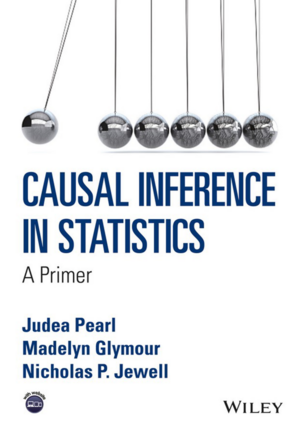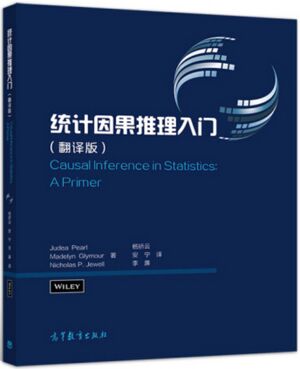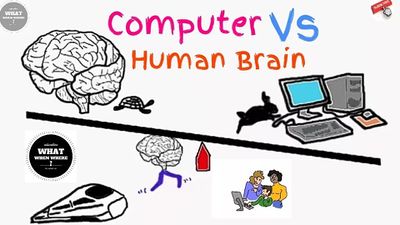“Causal Inference in Statistics: A Primer”的版本间的差异
(→资源获取) |
(→编者推荐) |
||
| 第154行: | 第154行: | ||
= 相关wiki = | = 相关wiki = | ||
= 编者推荐 = | = 编者推荐 = | ||
| + | |||
| + | ===豆瓣书评=== | ||
| + | ====[https://book.douban.com/review/14067788/ 一次减法带来的科学革命]==== | ||
| + | “一直都不太看好所谓的归因分析, 也不太理解为什么归因分析会作为图灵奖评审标准. 归因分析其实就是概率减法而已, 这是个再简单不过的概念.归因分析近年来受到了互联网公司的关注. Uber 就是其中之一.理论科学有的时候只要稍稍有一些创新概念, 就会带来应用领域的革命, 所以不要放过自己每一次的灵光一现.” ——Hao | ||
| + | |||
| + | |||
| + | ===Goodreads书评=== | ||
| + | ====[https://book.douban.com/review/1314955/ 一本被主流遗忘的经典?]==== | ||
| + | “In this short book, Pearl gives a broad yet detailed introduction to his flavor of causal inference. That means back-doors and front-doors and graphs as the foundation with potential outcomes and counterfactuals as the fruits to be harvested. | ||
| + | |||
| + | For a scientist, Pearl is an outstandingly good writer. Even his journal articles are readable! His popular book (The Book of Why: The New Science of Cause and Effect) was quite enjoyable and this textbook is concise and clear. I read this book at the same time as I was reading Causal Inference: What If and found that, for the concepts that are covered in both, Pearl's presentation was more clear. | ||
| + | |||
| + | The book has only four chapters. Chapter 1 gives an overview of causal inference and a brief overview of important background from probability theory. Chapter 2 lays out the graphical approach to structural causal models and introduces d-separation. Chapter 3 shows how to connect the graphical models to causal questions, with the central focus being back-door and front-door corrections, including a section on inverse probability weighting and linear models/regression. Chapter 4 expands the computational methods to a wider array of counterfactual questions, ending with extensive examples and explicit formulas for direct and indirect effects under mediation. | ||
| + | |||
| + | The greatest weakness of "The Book of Why" is that the examples are not worked out clearly. After reading it, you are convinced that there is something to this causal inference thing, but you have no intuition as to how to solve even the simplest problem involving confounders or colliders. In that sense, the current book is a worthy sequel. If you follow the equations and exercises (not particularly difficult), you will know how to solve simple causal inference problems. | ||
| + | |||
| + | That raises the question of who this book is intended for. I found the book to be challenging, but not bewildering or unnecessarily complex. I should note that I have a Ph.D. in physics and have worked for several years in something like "data science." In theory the book is intended for undergraduates who are studying "elementary statistics." I guess they would get something out of it, but my guess is that a beginning student would have difficulty appreciating what the relevance of these methods is without familiarity with how things are treated in the absence of them. After all, the math itself is rather simple, comfortably at the level of a precocious undergrad. What makes the subject challenging is understanding how to translate back and forth between assumptions about reality, graphs/equations and numerical estimates. | ||
| + | |||
| + | Unfortunately, there are a large number of typos and other minor errors in the book. He has a corrected pdf on his website if you're interested. Also, the course website is not whatever is written in the text, you need to Google it. | ||
| + | |||
| + | One last point is that there is an ongoing struggle within the causal inference community between Pearl's approach and the Neyman's potential outcomes approach. You'll see it obliquely referenced here, in Hernan's book (from the other side), in sparring journal articles and--of course--on academic Twitter. I kind of wish the argument would be less partisan and more philosophical but I guess even scientists are human beings. To get a sense of what the argument is about, I'd read https://ftp.cs.ucla.edu/pub/stat_ser/...。”——Michael | ||
| + | |||
| + | |||
| + | |||
| + | |||
| + | ===集智相关文章=== | ||
| + | |||
| + | 在人工智能盛行的今天,当绝大多数人仅对“奇巧淫技”感兴趣的时候,集智俱乐部重新编辑推出冯·诺依曼自动机理论这系列文章,这是著名人工智能先驱Arthur Burks整理的冯·诺依曼的手稿《自复制自动机理论》的第一部分,该部分详细论述了思考自复制自动机的动机与意义。该文后经由集智俱乐部资深粉丝“东方和尚”翻译成中文,并由张江注释后奉献给广大读者。希望通过溯本清源,我们能够重新追溯冯·诺依曼的思考轨迹,从全新的视角审视人造机器的生命本质。 | ||
| + | [[File:大数之道.jpeg|400px|right|thumb|[https://swarma.org/?p=3723 《自复制自动机理论》集智解读]]] | ||
| + | ====[https://swarma.org/?p=3723 冯·诺依曼的遗产:寻找人工生命的理论根源]==== | ||
| + | :《自复制自动机理论》前言1:冯·诺依曼在计算机方面的工作 | ||
| + | ====[https://swarma.org/?p=3678 冯·诺依曼:探寻计算的“原力”]==== | ||
| + | :《自复制自动机理论》前言2:冯·诺依曼的自动机理论 | ||
| + | ====[https://swarma.org/?p=3652 神经网络与图灵机的复杂度博弈]==== | ||
| + | :《自复制自动机理论》第一堂课:一般意义的计算机 | ||
| + | ====[https://swarma.org/?p=3633 人工智能如何掷骰子——三种概率理论]==== | ||
| + | :《自复制自动机理论》第二堂课:控制与信息理论 | ||
| + | ====[https://swarma.org/?p=3145 信息的统计理论:复杂度阈值与概率论中“漏洞”]==== | ||
| + | :《自复制自动机理论》第三堂课:信息的统计理论 | ||
| + | ====[https://swarma.org/?p=3216 大数之道——人脑与电脑的对比]==== | ||
| + | :《自复制自动机理论》第四堂课:大数之道 | ||
| + | ====[https://swarma.org/?p=3128 自指机器的奥秘]==== | ||
| + | :《自复制自动机理论》第五堂课:复杂自动机的一些考量——关于层次与进化的问题 | ||
| + | |||
| + | |||
| + | |||
| + | |||
| + | ---- | ||
| + | 本中文词条由[[用户:薄荷|薄荷]]编辑,欢迎在讨论页面留言。 | ||
| + | |||
| + | '''本词条内容源自wikipedia及公开资料,遵守 CC3.0协议。''' | ||
| + | |||
| + | [[category:人工智能]] | ||
| + | [[category:复杂系统]] | ||
| + | [[category:自动机]] | ||
2022年5月5日 (四) 22:12的版本
内容简介
因果性是理解和应用数据的核心,如果无法从数据中获知因果关系,则甚至无法回答诸如“治疗方案对患者有益还是有害”这类基本问题。虽然现在有很多关于数据分析统计方法的教科书,但到目前为止还没有适合初学者水平的书,介绍如何从数据中快速梳理因果信息的各种方法。
本书弥补了这种缺憾。书中使用简单的实例与朴实的语言介绍了如何定义因果关系,在各种情形下估计因果参数所必需的假设,如何数学化地表示这些假设,这些假设是否有可检测的蕴涵,如何预测干预的效应,以及如何进行反事实推理等。这些都是有兴趣用统计方法回答因果问题的读者需要掌握的基本工具。
基本信息
书名:Causal Inference in Statistics: A Primer
作者:Judea Pearl/Madelyn Glymour/Nicholas P. Jewell
中文翻译版:统计因果推理入门
译者: 杨矫云 / 安宁 / 李廉
作者介绍
Judea Pearl是美国加利福尼亚大学洛杉矶分校计算机科学和统计学的教授,他是认知系统实验室负责人,从事人工智能、因果推理和科学哲学的研究。Pearl 是《因果推理期刊》的联合创始人和编辑,著有三本关于推理领域的里程碑式著作。他的著作《因果关系:模型、推理和推断》(剑桥出版社,2000,2009)介绍了现代因果分析中使用的许多方法。该书获得了伦敦经济学院拉卡托斯奖( Lakatos Award),并被超过13000篇科学出版物引用。Pearl 是美国国家科学院院士、美国国家工程院院士、美国人工智能协会的创始会士。由于对概率和因果推理的基础性贡献,Pearl 囊获了包括以色列理工学院的哈维奖(Harvey Prize)和 ACM 图灵奖在内的众多奖项。
Madelyn Glymour是卡内基-梅隆大学的数据分析师、加利福尼亚大学洛杉矶分校认知系统实验室的科学作家和编辑。研究兴趣在因果发现以及能够让广大读者理解复杂概念所蕴含的艺术。
Nicholas P. Jewell是加利福尼亚大学伯克利分校生物统计学和统计学教授。自从1981年进入伯克利分校后,先后担任多个学术和行政职务,特别是1994-2000年间担任了副教务长。他还曾在爱丁堡大学、牛津大学、伦敦卫生与热带医学院以及京都大学担任学术职务。2007年,他在意大贝拉吉奥洛克菲勒基金研究中心做访问学者。Jewell 是美国统计协会、数理统计研究所和美国科学促进协会(AAAS)会士。曾经获得斯内德克奖和哈佛大学统计科学马文·泽伦领导奖。Jewell 目前是《美国统计协会会刊:理论与方法》杂志编辑、美国科学促进会统计学分会的主席。他的研究重点是把统计方法应用到传染病和慢性病流行病学、药物安全性评估、比较分析和人权领域。
内容目录
Preface xi
1 Preliminaries: Statistical and Causal Models 1
1.1 Why Study Causation 1
1.2 Simpson’s Paradox 2
1.3 Probability and Statistics 9
1.3.1 Variables 10
1.3.2 Events 11
1.3.3 Conditional probability 11
1.3.4 Independence 13
1.3.5 Probability distributions 14
1.3.6 The law of total probability 15
1.3.7 Using Bayes’ rule 18
1.3.8 Expected values 22
1.3.9 Variance and covariance 24
1.3.10 Regression 27
1.3.11 Multiple regression 31
1.4 Graphs 33
1.5 Structural Causal Models 36
1.5.1 Modeling causal assumptions 36
1.5.2 Product decomposition 40
2 Graphical Models and Their Applications 47
2.1 Connecting Models to Data 47
2.2 Chains and Forks 48
2.3 Colliders 55
2.4 d-Separation 62
2.5 Model Testing and Causal Search 66
3 The Effects of Interventions 71
3.1 Interventions 71
3.2 The Adjustment Formula 74
3.2.1 To adjust or not to adjust? 79
3.2.2 Multiple interventions and the truncated product rule 81
3.3 The Back-Door Criterion 82
3.4 The Front-Door Criterion 89
3.5 Conditional Interventions and Covariate-Specific Effects 95
3.6 Inverse Probability Weighing 98
3.7 Mediation 103
3.8 Causal Inference in Linear Systems 107
3.8.1 Structural vs. regression coefficients 110
3.8.2 The causal interpretation of structural coefficients 111
3.8.3 Identifying structural coefficients and causal effect 113
3.8.4 Mediation in linear systems 119
4 Counterfactuals and their Applications 123
4.1 Counterfactuals 123
4.2 Defining and Computing Counterfactuals 126
4.2.1 The structural interpretation of counterfactuals 126
4.2.2 The fundamental law of counterfactuals 130
4.2.3 From population data to individual behavior – an illustration 131
4.2.4 The three steps in computing counterfactuals 133
4.3 Non-Deterministic Counterfactuals 136
4.3.1 Probabilities of counterfactuals 136
4.3.2 The Graphical representation of counterfactuals 141
4.3.3 Counterfactuals in experimental settings 144
4.3.4 Counterfactuals in linear models 147
4.4 Practical uses of counterfactuals 149
4.4.1 Recruitment to a program 149
4.4.2 Additive interventions 152
4.4.3 Personal decision making 155
4.4.4 Sex discrimination in hiring 158
4.4.5 Mediation and path-disabling interventions 159
4.5 Mathematical Tool Kits for Attribution and Mediation 161
4.5.1 A tool kit for attribution and probabilities of causation 162
4.5.2 A tool kit for mediation 167
References 176
资源获取
相关wiki
编者推荐
豆瓣书评
一次减法带来的科学革命
“一直都不太看好所谓的归因分析, 也不太理解为什么归因分析会作为图灵奖评审标准. 归因分析其实就是概率减法而已, 这是个再简单不过的概念.归因分析近年来受到了互联网公司的关注. Uber 就是其中之一.理论科学有的时候只要稍稍有一些创新概念, 就会带来应用领域的革命, 所以不要放过自己每一次的灵光一现.” ——Hao
Goodreads书评
一本被主流遗忘的经典?
“In this short book, Pearl gives a broad yet detailed introduction to his flavor of causal inference. That means back-doors and front-doors and graphs as the foundation with potential outcomes and counterfactuals as the fruits to be harvested.
For a scientist, Pearl is an outstandingly good writer. Even his journal articles are readable! His popular book (The Book of Why: The New Science of Cause and Effect) was quite enjoyable and this textbook is concise and clear. I read this book at the same time as I was reading Causal Inference: What If and found that, for the concepts that are covered in both, Pearl's presentation was more clear.
The book has only four chapters. Chapter 1 gives an overview of causal inference and a brief overview of important background from probability theory. Chapter 2 lays out the graphical approach to structural causal models and introduces d-separation. Chapter 3 shows how to connect the graphical models to causal questions, with the central focus being back-door and front-door corrections, including a section on inverse probability weighting and linear models/regression. Chapter 4 expands the computational methods to a wider array of counterfactual questions, ending with extensive examples and explicit formulas for direct and indirect effects under mediation.
The greatest weakness of "The Book of Why" is that the examples are not worked out clearly. After reading it, you are convinced that there is something to this causal inference thing, but you have no intuition as to how to solve even the simplest problem involving confounders or colliders. In that sense, the current book is a worthy sequel. If you follow the equations and exercises (not particularly difficult), you will know how to solve simple causal inference problems.
That raises the question of who this book is intended for. I found the book to be challenging, but not bewildering or unnecessarily complex. I should note that I have a Ph.D. in physics and have worked for several years in something like "data science." In theory the book is intended for undergraduates who are studying "elementary statistics." I guess they would get something out of it, but my guess is that a beginning student would have difficulty appreciating what the relevance of these methods is without familiarity with how things are treated in the absence of them. After all, the math itself is rather simple, comfortably at the level of a precocious undergrad. What makes the subject challenging is understanding how to translate back and forth between assumptions about reality, graphs/equations and numerical estimates.
Unfortunately, there are a large number of typos and other minor errors in the book. He has a corrected pdf on his website if you're interested. Also, the course website is not whatever is written in the text, you need to Google it.
One last point is that there is an ongoing struggle within the causal inference community between Pearl's approach and the Neyman's potential outcomes approach. You'll see it obliquely referenced here, in Hernan's book (from the other side), in sparring journal articles and--of course--on academic Twitter. I kind of wish the argument would be less partisan and more philosophical but I guess even scientists are human beings. To get a sense of what the argument is about, I'd read https://ftp.cs.ucla.edu/pub/stat_ser/...。”——Michael
集智相关文章
在人工智能盛行的今天,当绝大多数人仅对“奇巧淫技”感兴趣的时候,集智俱乐部重新编辑推出冯·诺依曼自动机理论这系列文章,这是著名人工智能先驱Arthur Burks整理的冯·诺依曼的手稿《自复制自动机理论》的第一部分,该部分详细论述了思考自复制自动机的动机与意义。该文后经由集智俱乐部资深粉丝“东方和尚”翻译成中文,并由张江注释后奉献给广大读者。希望通过溯本清源,我们能够重新追溯冯·诺依曼的思考轨迹,从全新的视角审视人造机器的生命本质。
冯·诺依曼的遗产:寻找人工生命的理论根源
- 《自复制自动机理论》前言1:冯·诺依曼在计算机方面的工作
冯·诺依曼:探寻计算的“原力”
- 《自复制自动机理论》前言2:冯·诺依曼的自动机理论
神经网络与图灵机的复杂度博弈
- 《自复制自动机理论》第一堂课:一般意义的计算机
人工智能如何掷骰子——三种概率理论
- 《自复制自动机理论》第二堂课:控制与信息理论
信息的统计理论:复杂度阈值与概率论中“漏洞”
- 《自复制自动机理论》第三堂课:信息的统计理论
大数之道——人脑与电脑的对比
- 《自复制自动机理论》第四堂课:大数之道
自指机器的奥秘
- 《自复制自动机理论》第五堂课:复杂自动机的一些考量——关于层次与进化的问题
本中文词条由薄荷编辑,欢迎在讨论页面留言。
本词条内容源自wikipedia及公开资料,遵守 CC3.0协议。


